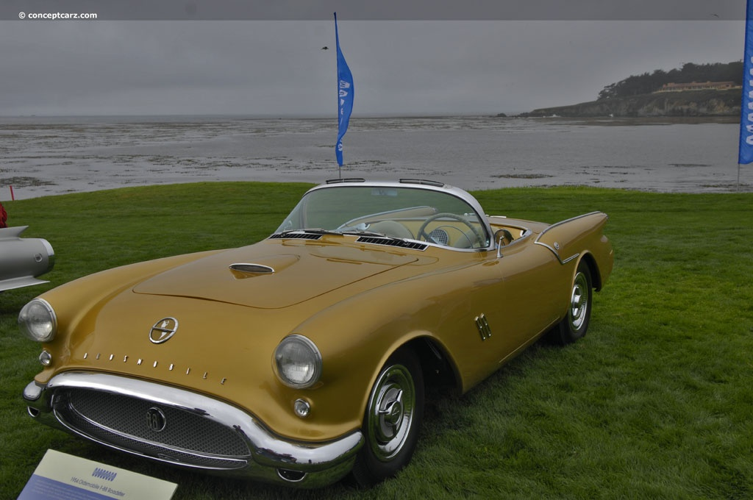When the 1954 Oldsmobile F-88 debuted as a concept car, it immediately captured the attention of automotive enthusiasts. Unveiled at the 1954 GM Motorama auto show in New York City, the F-88 marked a bold step forward in design and innovation. Initial sketches were crafted by famed designer Bill Lange and brought to life under the supervision of Art Ross in the Oldsmobile studio. One of the key innovations was its construction — a sleek fiberglass body mounted on a 102-inch Corvette chassis.
Too Bold to Build?

It’s been said that the F-88 never made it to production because it hit a little too close to home — specifically, Chevrolet’s. The Corvette was struggling with sluggish sales in the early 1950s, and the F-88, with its similar sporty design, posed a potential threat. Chevrolet reportedly convinced GM decision-makers to shelve the F-88 so the Corvette wouldn’t have to compete for market share within its own corporate family. The idea that internal competition could have doomed such a forward-thinking vehicle is both frustrating and fascinating.
Performance Meets Beauty
The Oldsmobile F-88 wasn’t just about good looks — it packed serious performance. Under the hood, it featured the legendary Rocket V8 engine, complete with a four-barrel carburetor and a compact air cleaner. The 324-cubic-inch engine cranked out 250 horsepower — a formidable amount for the 1950s. This power matched the F-88’s sleek, sporty appearance and confirmed that Oldsmobile wasn’t just daydreaming about entering the sports car race — they were ready to run it.
Corvette's Close Call
The F-88 could have been a game changer. Its design, engineering, and undeniable "sex appeal" suggested a bright future for Oldsmobile in the sports car arena. But Corvette’s influence won out. On closer review, it seems likely that Chevrolet simply wasn’t ready to face internal competition. The idea that the F-88 might have eclipsed the Corvette wasn’t outlandish — it was entirely possible. And perhaps that’s what made it too dangerous to greenlight.
A Glimpse Into the Future

The vision behind the F-88 was born from the creative genius of designers who understood the cultural moment. America was entering the Space Age, and innovation was the name of the game. Fiberglass — then considered experimental — was proving itself viable for automotive use. The F-88 was one of the early examples showing that this lightweight, futuristic material wasn’t just feasible, it was desirable. It helped set the stage for a new era in American sports car design.
The Legacy That Might Have Been
Had the F-88 gone into production, it may have pushed other American automakers to rethink their designs — and could have shaken up foreign sports car sales in the U.S. market. Though it never made it past the concept phase, the F-88 stands as a symbol of what could have been: a bold, beautiful, high-performance machine that showcased the ingenuity and ambition of an era.




(0) comments
We welcome your comments
Log In
Post a comment as Guest
Keep it Clean. Please avoid obscene, vulgar, lewd, racist or sexually-oriented language.
PLEASE TURN OFF YOUR CAPS LOCK.
Don't Threaten. Threats of harming another person will not be tolerated.
Be Truthful. Don't knowingly lie about anyone or anything.
Be Nice. No racism, sexism or any sort of -ism that is degrading to another person.
Be Proactive. Use the 'Report' link on each comment to let us know of abusive posts.
Share with Us. We'd love to hear eyewitness accounts, the history behind an article.